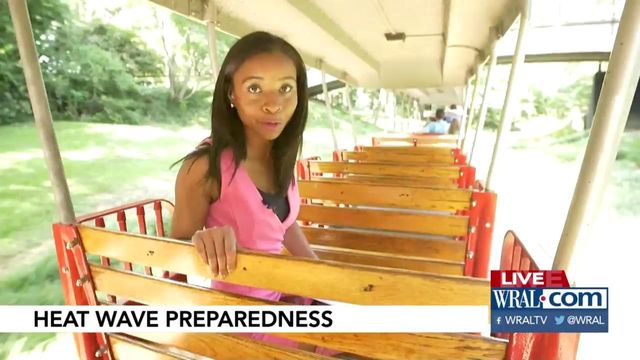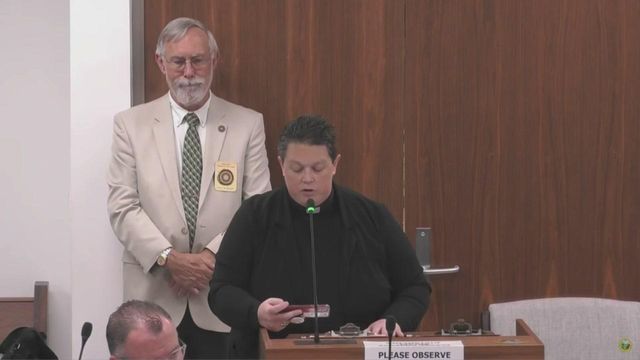EMTs: Prepare before you go out in 'dangerous heat'
The first big heat wave of the year is here, according to WRAL meteorologist Elizabeth Gardner.
Highs reached the mid-90s on Monday and will push even higher on Tuesday, and the days to follow will follow a similar pattern.

According to Gardner, high dew points and humidity will make it feel like 100 degrees or higher on Tuesday afternoon.
"It's possible our Heat Index Values will reach between 100 and 105 degrees," said Gardner. "This will be the first dangerous heat of the year, so make sure if you work outside use the proper protocols to prevent heat exhaustion."
At Raleigh's Pullen Park, where parents and children were lined up to get on the train and out of the sun, Jeff Hammerstein, of Wake County EMS, urged preparation throughout the day to weather the heat.
"You've got to take the necessary precautions to drink fluids ahead of time, to stay hydrated through the course of whatever the activity is," he said.
Aubrey Rollings prepared with plenty of sunscreen and a packed bag.
"My bag is full of water," she said, "and then we have like two Thermoses full of ice water as well."
Beat the heat with simple tips
Surviving the heat can be as easy as a little planning ahead and common sense.
Prepare your home
- Stay cool and save money by setting the thermostat to a comfortable level. Duke Energy Progress recommends 78 degrees. Every degree above 78 degrees will reduce cooling costs by 3 percent to 6 percent.
- Be sure your cooling system is working efficiently. Check filters, and make sure air-conditioning vents are not obstructed.
- Close the drapes on the sunny side of the house to help keep the temperature down inside the home.
Protect yourself and others
- Be aware of heat exhaustion and serious heat illness, and know the signs, including headaches, excessive sweating, no sweating, rapid pulse, dizziness, nausea, muscle cramps, confusion, fever and fatigue. Seek medical help immediately if you experience any of these symptoms.
– EMS: This kind of heat prompts more 911 calls
- Those most at risk for heat exhaustion include the very young and the very old, as well as anyone who is obese or on medications, such as antihistamines, diuretics or beta blockers.
- Stay out of the heat, especially between the hours of 10 a.m. and 2 p.m., when it's usually the hottest and the heat is the most intense.
- If you have to be outside, take frequent breaks.
- Stay hydrated by drink plenty of liquids, preferably water or a sports drink with electrolytes. Don't wait until you are thirsty.
- Wear loose clothing, and instead of a baseball hat, which only covers the front of the face, wear a broad-rim hat that also covers the neck and shoulders.
Protect your pets
- Limit your pet's exercise to early mornings and evenings.
- Remember that asphalt becomes very hot, which can burn tender foot pads. Keep fresh water handy, and ensure that cooling shade is always nearby.
- Never leave a pet in a parked car, even with the windows rolled down. Dehydration, heat stroke and even brain damage to the dog or cat can occur.
- Check on pets frequently, and make sure they always have fresh water and access to shade.
Heat, sunlight contributes to Code Orange air quality alert
According to Gardner, the heat will remain dangerous through Wednesday at least.
During that time, the viewing area is under a Code Orange alert for elevated ozone levels, meaning that seniors, young children and those sensitive to air quality issues should limit outdoor exertion.
Everyone working outside should find shade and drink plenty of water to avoid becoming overheated.

Tuesday will be the hottest day of the week, with high temperatures expected to reach 99 degrees in the Triangle. In addition to the heat, afternoon storms will be possible each day, but they will be isolated.
A front that is expected to move in at the end of the work week could bring more rain to the Triangle but will also help temperatures drop back into the 80s by Friday.













